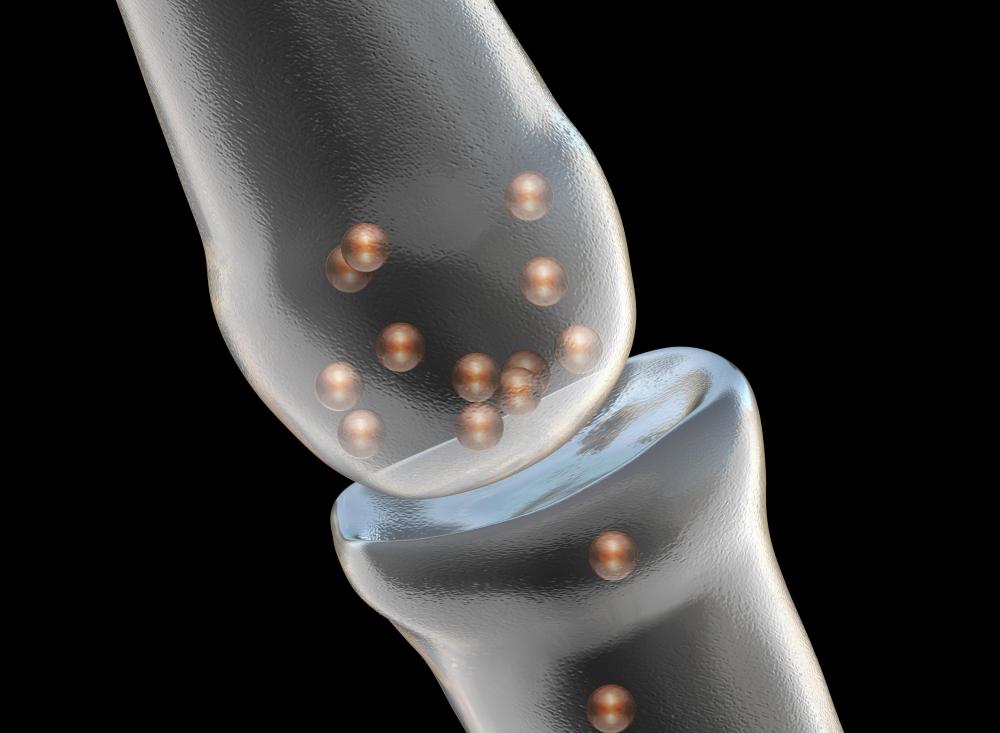At TheHealthBoard, we're committed to delivering accurate, trustworthy information. Our expert-authored content is rigorously fact-checked and sourced from credible authorities. Discover how we uphold the highest standards in providing you with reliable knowledge.
What is a Cortical Neuron?
Cortical neurons are the cells of the brain's largest region, the two hemispheres of the cerebral cortex. Most of the complex activity of the brain enabling thought, perception, and voluntary movement is connected to the activity of these neurons. The brain has more than a dozen types of cortical neurons, broadly classified by whether they activate or inhibit neural activity. These nerve cells communicate with each other through chemical and electrical signaling, and often use molecules called neurotransmitters to send messages at junctions called synapses.
The main functional cell type of the brain's cerebral cortex is the cortical neuron. These neurons are packed into the cortex, also called the gray matter, which is up to four millimeters thick along both cerebral hemispheres. Cortical neuron activity moderates perception and communication in the brain, and also effects musculoskeletal control, the basis of voluntary movement, like walking. It is important to note that while many psychophysical phenomena seem to depend on the cerebral cortex, no single region or individual neuron can account for complex mental activity, which is often spread out among many different networks of millions of neurons working together.

The surface of the cerebral cortex is folded into many grooves of various depths, called sulci, enabling a large number of neurons to fit into the relatively small area of the hemispheres. Here, neurons are arranged in six layers. Different types of cortical neurons populate these layers, from I to VI, which are identified by laboratory staining techniques and by their different sizes and shapes. Some types of neurons stimulate electrical firing and are called excitatory neurons; others stop or slow electrical activity and are deemed inhibitory neurons. A third category, interneurons, facilitate communication between these types of neurons.

Cortical neurons communicate with each other at junctions called synapses, located at hundreds of sites on the outer surface of any given cell. At a synaptic site, two cell membranes come into proximity, and both of them have lots of molecular structures called receptors that enable them to receive messages from each other. Electrical synapses convey signals between neurons in the form of a current called an action potential, while chemical synapses rely on neurotransmitters released by one cell and then bind to the other cell in the synapse.

Major excitatory cortical neuron types include pyramidal cells and spiny stellate cells. The former were named for their triangular cell bodies and have extensive connections with other neurons in the cortex and beyond. Inhibitory neurons come in many varieties, including basket and chandelier cells, and the smooth, spineless stellate cells, named for their lack of spiny projections to other nerves. Both groups of cortical neuron use chemical signaling to interact with adjacent cells, relying on specialized chemicals called neurotransmitters for this purpose. Excitatory neurons often use the neurotransmitter glutamate, while inhibitory cells predominantly signal through the compound GABA.
AS FEATURED ON:
AS FEATURED ON:















Discuss this Article
Post your comments